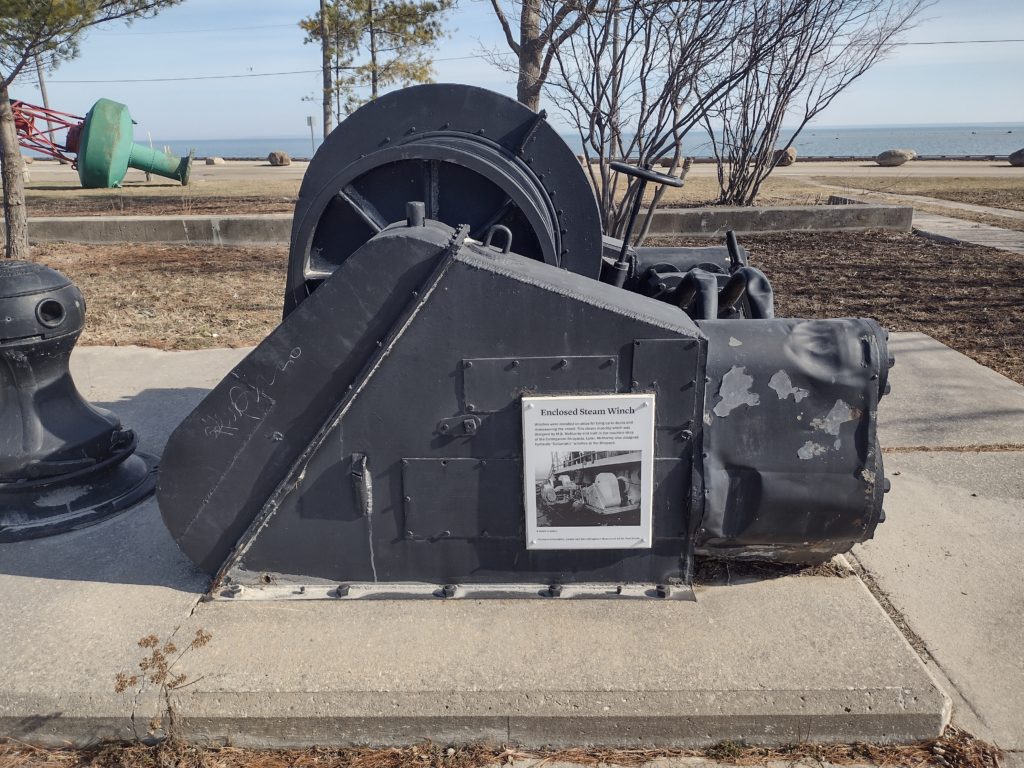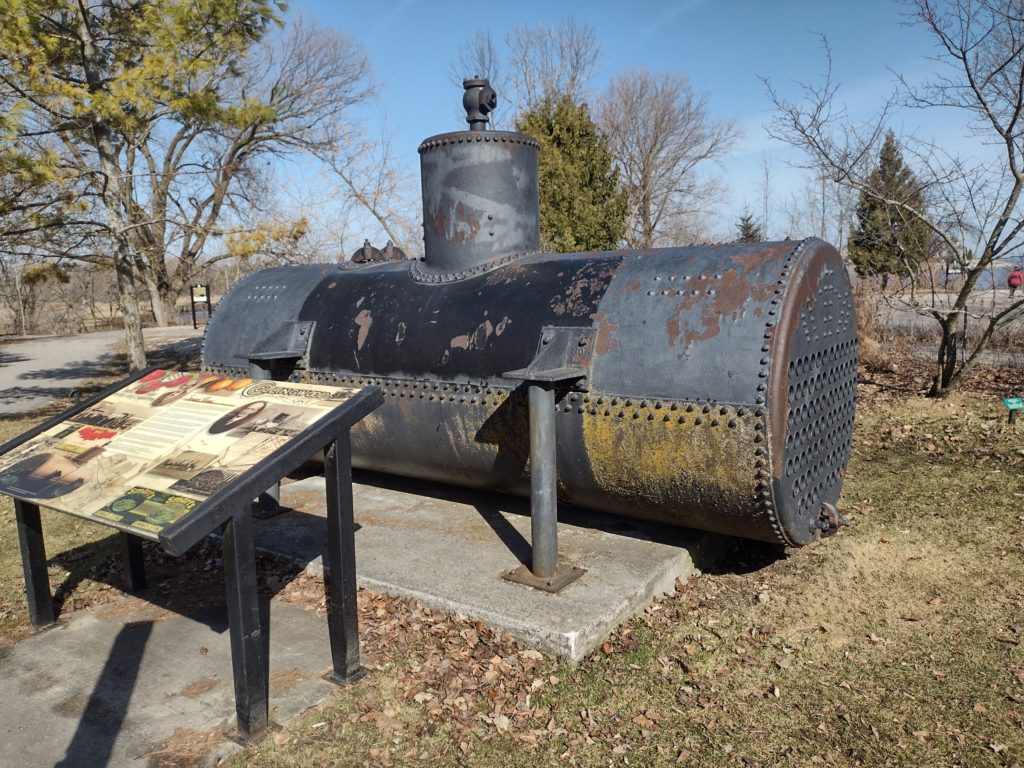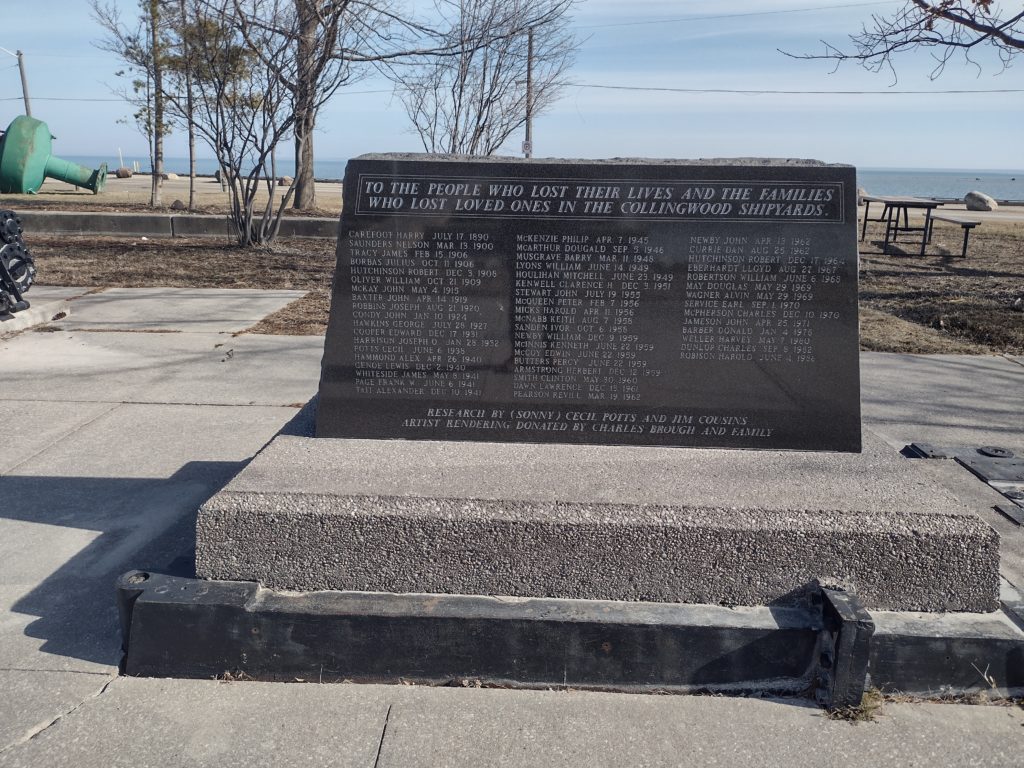A couple of weeks ago, the family and I went to vist Collingwood, Ontario for a few days.
These days, Collingwood is best known for Blue Mountain and Skiing (which started during the Second World War, and whose supporters in the 1950s included many former Luftwaffe officers in the 1950s, it turns out. Another side of Collingwood, now long ended, was its history as a shipbuilding port.
Collingwood is on Nottawasaga Bay, on the South-west edge of Georgian Bay, and so has access to Lake Huron, Lake Erie and Lake Michigan, and to Lake Superior and the rest of the World via the Welland Canal(s) and via precursors to the St Lawrence Seaway. Shipbuilding started in the 1880s, and continued until the CCGS Sir Wilfrid Laurier was built in 1986.1 I personally have worked on one vessel – the CCGS Griffon – which was built in Collingwood. It was the building site for many of the classic Lakers, such as the Tadoussac which overwintered in Toronto in 2023/2024.
Not much remains of the Collingwood Shipbuilding site- the old buildings were demolished in the first few years after the turn of the millennia, and it’s been replaced largely by a park, and by commercial and residential development.
All photos here taken by me. If they’re good, it’s the phone. If they’re bad, that’s on me.
 There’s not much in terms of actual “boat stuff”, but this is very cool to see. It’s a Bifurcation Buoy, from the Great Lakes, from where a channel splits to be a primary and secondary channel. Green Red Green- the secondary channel is to port, main channel to starboard. I believe that ‘T C’ stands for Transport Canada, rather than being a buoy identifier. I find this to be especially appropriate for this site since a number of Canadian Coast Guard buoy tenders including Griffon and Sir Wilfrid Laurier were built at Collingwood.
There’s not much in terms of actual “boat stuff”, but this is very cool to see. It’s a Bifurcation Buoy, from the Great Lakes, from where a channel splits to be a primary and secondary channel. Green Red Green- the secondary channel is to port, main channel to starboard. I believe that ‘T C’ stands for Transport Canada, rather than being a buoy identifier. I find this to be especially appropriate for this site since a number of Canadian Coast Guard buoy tenders including Griffon and Sir Wilfrid Laurier were built at Collingwood.

 Here we have a steam winch and steam hammer, representing the machinery both aboard the ships and used to make the ships. The Steam Winch was designed by M.B. McMurray according to the sign. Built at the shipyards, it was used aboard lakers and other vessels to take up tension on mooring lines. The Steam hammer was used in Collingwood to manufacture parts for the ships, and for making tools.
Here we have a steam winch and steam hammer, representing the machinery both aboard the ships and used to make the ships. The Steam Winch was designed by M.B. McMurray according to the sign. Built at the shipyards, it was used aboard lakers and other vessels to take up tension on mooring lines. The Steam hammer was used in Collingwood to manufacture parts for the ships, and for making tools.
As a union man, delighted to see a memorial like this, for those lost in dangerous work.
Looking from the parking lot across the (temporarily) ice-free docks, we can just see the still-extant drydocks/graving docks. One is opening directly in front of camera, with the house on the right built facing 90 degrees to the axis of the drydock. The other drydock starts centre of the photo and runs to the left, towards that building under construction and the parking lot beyond.



As a gardener, this within the gardens next to the shipyards is a delight. It’s a boiler, not from a ship but used instead to heat greenhouses for growing tomatos and other vegetables. I knew- know- that Collingwood is an agricultural area, as it’s big for Orchards, especially for apples and apple cider makers. However, I didn’t know about this part of Collingwood’s horticultural heritage.
The reality is, there’s not much left of the shipyard and drydock, but it’s absolutely worth a visit as it’s a lovely walk and a great place to run kids around before a trip.
If you’re interested in learning more about Collingwood Shipbuilding, I have to suggest The Ships of Collingwood, by Skip Gillham. The late Skip Gillham was the doyen of Great Lakes shipping and tugs. He was a perfect example of the wealth of knowledge and experience “amateur” historians can bring to a field and he is much missed.








